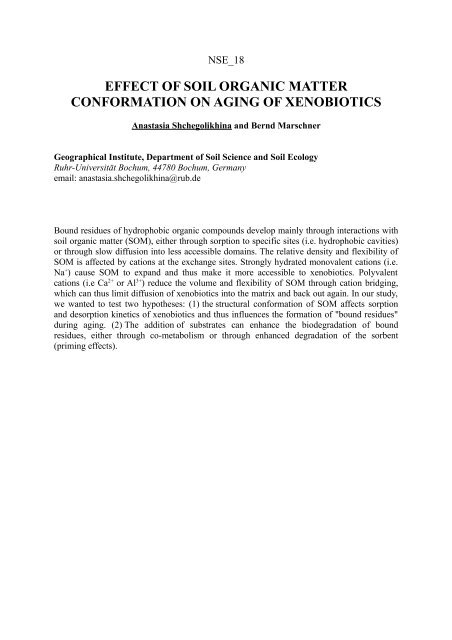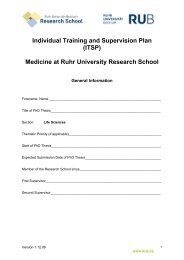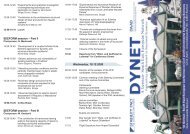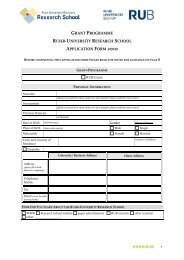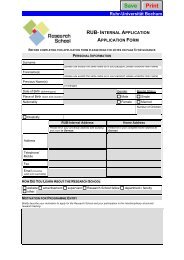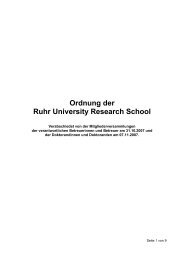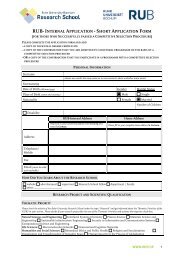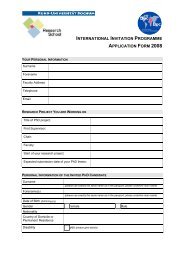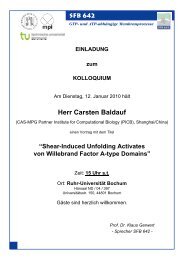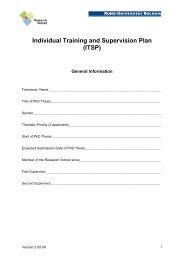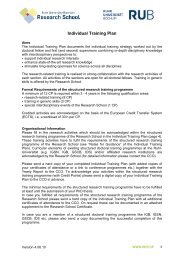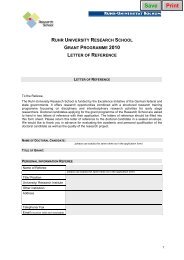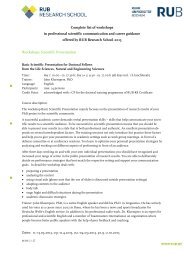Section Days abstract book 2010.indd - RUB Research School ...
Section Days abstract book 2010.indd - RUB Research School ...
Section Days abstract book 2010.indd - RUB Research School ...
You also want an ePaper? Increase the reach of your titles
YUMPU automatically turns print PDFs into web optimized ePapers that Google loves.
NSE_18<br />
EFFECT OF SOIL ORGANIC MATTER<br />
CONFORMATION ON AGING OF XENOBIOTICS<br />
Anastasia Shchegolikhina and Bernd Marschner<br />
Geographical Institute, Department of Soil Science and Soil Ecology<br />
Ruhr-Universität Bochum, 44780 Bochum, Germany<br />
email: anastasia.shchegolikhina@rub.de<br />
Bound residues of hydrophobic organic compounds develop mainly through interactions with<br />
soil organic matter (SOM), either through sorption to specific sites (i.e. hydrophobic cavities)<br />
or through slow diffusion into less accessible domains. The relative density and flexibility of<br />
SOM is affected by cations at the exchange sites. Strongly hydrated monovalent cations (i.e.<br />
Na + ) cause SOM to expand and thus make it more accessible to xenobiotics. Polyvalent<br />
cations (i.e Ca 2+ or Al 3+ ) reduce the volume and flexibility of SOM through cation bridging,<br />
which can thus limit diffusion of xenobiotics into the matrix and back out again. In our study,<br />
we wanted to test two hypotheses: (1) the structural conformation of SOM affects sorption<br />
and desorption kinetics of xenobiotics and thus influences the formation of "bound residues"<br />
during aging. (2) The addition of substrates can enhance the biodegradation of bound<br />
residues, either through co-metabolism or through enhanced degradation of the sorbent<br />
(priming effects).


